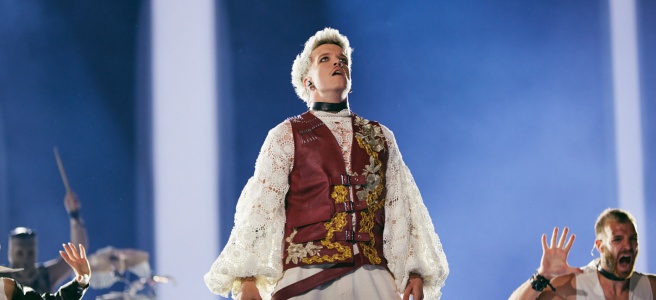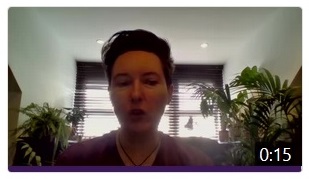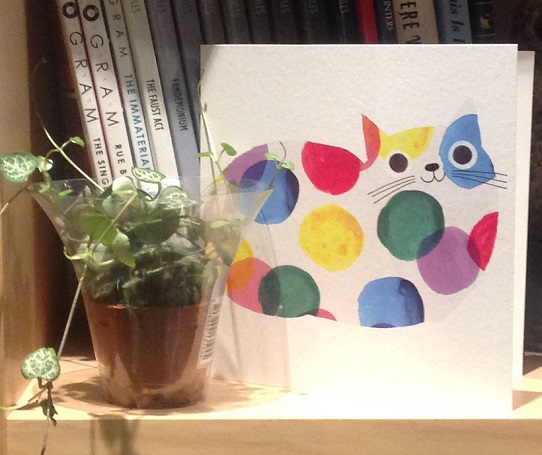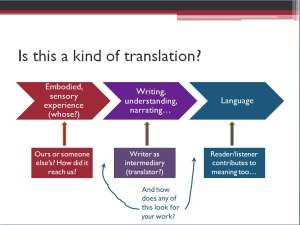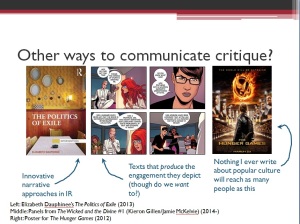Until Baby Lasagna’s folk-techno breakthrough ‘Rim tim tagi dim’ leapt to the top of this year’s Eurovision odds, Croatia had never been among the Eurovision favourites since Doris Dragović’s ‘Marija Magdalena’ in 1999 – when Baby Lasagna was only two years old, Ukraine had not even begun to compete, and some members of Måneskin had not even been born.
Back in 1999, Croatia recording a first Eurovision win as an independent country would have seemed only a matter of time. Most of Yugoslavia’s nostalgically remembered light pop entries from the 1980s, including Dragović’s first Eurovision appearance in 1986 and Yugoslavia’s only winning song in 1989, had come from the Zagreb studio of Yugoslavia’s federal public broadcaster.
Zagreb hosted Eurovision 1990, with Tajči’s legendary home entry ‘Hajde da ludujemo’, days before the pro-independence Croatian Democratic Union would win multiparty elections, and weeks before RTV Zagreb would transform into Croatian Radio-Television (HRT), with the mission of promoting a Westernised, central European identity for the nation and separating from Yugoslav culture for good.
After making its independent Eurovision debut in 1993, Croatia took six top ten places in seven years between 1995 and 2001 – and then never again.
Where did it all go wrong?
As late as 2005–6 when established stars Boris Novković and Severina tried to mine the vein of Eurovision’s passion for ethnopop, Croatia could still expect to place just below the top ten (Novković came 11th, Severina 12th). Croatia’s next entry failed to qualify from the semi-final, the two next entries came 21st and 18th, and between 2010 and 2022 a dismal qualification record saw only two Croatian entries, in 2016–17, reach the grand final at all.
The broadcaster which had been so keen to join Eurovision in 1992 that it organised sovereign Croatia’s first national preselection before its European Broadcasting Union membership was even complete even skipped the contest altogether in 2014–15, after its attempt to celebrate the addition of traditional Dalmatian klapa singing to UNESCO’s intangible cultural heritage list with a hastily-assembled klapa supergroup and tourist-trap video, ‘Mižerja’, fell flat in 2013.
Albina’s uptempo ‘Tick Tock’ failing to qualify in 2021, despite high hopes, seemed to set off a much deeper sense of ‘shock, anger and grief’ among a disappointed public over what had become of Croatia’s 1990s independence dream.
Public finance problems, corruption, HRT management priorities, and the relatively lower stakes of being able to influence international perceptions of the nation through Eurovision once Croatia had EU membership in hand are all part of the story of Croatia’s Eurovision decline.
The tameness and Westernness of most of the songs even selected internally or chosen for HRT’s national final, Dora, since 2007 also suggests, however, an institutional fear of unleashing the kind of scandal Severina’s ‘Moja štikla’ caused in 2006 when her cheeky repackaging of folklore from the Dinaric highlands represented Croatia by combining her risqué humour with the most ‘Balkan’ of the folk traditions on the nation’s diverse cultural map.
HRT’s choice to allow Let 3 – who have played with that same folklore – to spin off a concept from their antimilitarist rock opera project into a Dora entry in 2023, then to give the veteran art-punk band the licence to transfer its satire of warmongering dictators to Eurovision with minimal changes, showed that creative risk was back on the menu, and earned Croatia its first grand final place since 2017.
Even then, producers did not originally choose ‘Rim tim tagi dim’ for Dora: the song that won such a landslide public vote from Croatian viewers that it scored more points than the other 15 finalists combined only moved up from HRT’s reserve list when another participant pulled out. Besides the anxious everyman of his performance or his back story as a metal guitarist going solo, Baby Lasagna’s persona is now also that of an underdog hero triumphing over corruption at the national broadcaster – what might in other circumstances be the plot of a post-Yugoslav Croatian film.
‘Rim tim tagi dim’ becoming so strong a favourite for Eurovision that Zagreb is among the European cities reserving their arenas for next May is ‘Moja štikla’’s revenge: proof that creative play with folklore, scaled up to the spectacle level that contemporary Eurovision demands, can put Croatian entries back into contention, and that the lode has been sitting there untapped all this while.
In the shadows
Marko Purišić, who took the name Baby Lasagna after leaving the folk metal band Manntra to start a solo career, comes from Umag on the tip of Croatia’s Istrian peninsula, almost the northernmost town before the Slovenian border and the still mildly contested Gulf of Piran.
Istria and the adjacent Gulf of Kvarner, where Let 3’s home town Rijeka is the largest city, both take pride in a cosmopolitan, multilingual identity which has often put the region at odds with homogenising patriotism at national level – and have now produced the two most talked-about Croatian Eurovision entries in years.
Manntra formed in Umag as teenagers, joining a list of musicians from the town which also includes Eurodance band Karma and the singer-songwriter Alka Vuica, whose kitsch image made her unusually able to explore Croatia’s Balkan hang-ups – and hint at sapphic relationships – in the mid-1990s’ and early 2000s’ Croatian pop scene. (The city council booked Vuica and Karma to make a summer dance video showing off Umag’s beach tourism in 2015.)
Except when the privately-owned Stella Maris resort plays host to the Sea Star electronic music festival or the Croatia Open tennis championships, Umag is somewhat off the map of Croatia’s headline tourist destinations. The hill towns and villages of inland Istria are even more so, though a regional ecotourism strategy aims to change that.
The 3.4 million views already gathered for the official video of ‘Rim tim tagi dim’, filmed in the Umag countryside, are a promotional opportunity for Umag’s own brand that city leaders couldn’t fail to engage with: the city council and tourist board are even contributing to the logistical costs of Baby Lasagna’s performance in Malmö ‘so that Umag and Croatia will be represented in the “world” as they deserve.’
With just two online song releases before ‘Rim tim tagi dim’ to his name since leaving Manntra, Baby Lasagna’s Dora performance was his first as a lead vocalist, and the vulnerability he showed on Instagram and TikTok videos opening up about his confidence struggles immediately endeared him to a fan culture that commonly adores performances of ‘soft masculinity’ in its male idols.
Though only 28, Purišić has had the benefit of a decade’s experience in live music through Manntra, who began finding their way on to the German folk metal scene in 2017 by collaborating with the frontman of medieval metal band In Extremo, and saw their latest album without Purišić enter the German charts in 2023 – a level of exposure beyond the post-Yugoslav region of which many Croatian acts who are better-known at home only dream.
Manntra brought German folk metal style back to Dora in 2019 with their fourth-placed ‘In The Shadows’ (not the last Finnish coincidence in this post), where Purišić is just about visible in a grey tunic on the right:
Baby Lasagna’s folk metal and industrial background carries through into the lighter-hearted vibe of ‘Rim tim tagi dim’, with strong influences of Rammstein, just like 2023’s Finnish Eurovision sensation Käärijä. ‘Rim tim tagi dim’ was always going to be compared to Käärijä’s ‘Cha cha cha’ because of its own driving riffs and its ability to explore both personal vulnerability and an actual social problem beneath hedonistic top-notes, even before Baby Lasagna’s Dora outfit turned out to also feature puffy sleeves – as able to inspire fan art as Käärijä’s green bolero in 2023, but in this case alluding to Istrian folk costume.
Those Rammstein-like riffs, similarly, also have roots in a wellspring of experimentation with local folk tradition by Istrian pop and rock musicians which dates back to the mid-1990s and even had a token presence at Dora but never came close to representing Croatia at Eurovision itself.
Ča, ča, ča, ča-ča-ča-ča
In the fraught cultural politics of mid-1990s Croatia, alternative-minded Istrian pop and rock musicians started affirming their regional identity by singing in their own dialect, creating a movement known as the ‘ča-val’ or ‘ča-wave’ (‘ča’ is the Istrian word for ‘what’, lending its name to the ‘čakavian’ dialect; standard literary Croatian, ‘štokavian’, says ‘što’).
Ča-val bands like Gustafi, from Pula, developed a laid-back musical idiom which expressed what they saw as the region’s mentality and claimed a full place for their own dialect in Croatian rock.
Ča-val overlapped with the ‘etno’ movement, where musicians across Croatia in the mid-1990s started exploring lower-profile regional folk traditions in more serious, authentic ways than mainstream showbusiness or TV folklore shows had been accommodating. The sound eventually crossed over into mainstream pop, with trained ethnomusicologist Lidija Bajuk and TV presenter Ivana Plechinger both presenting songs inspired by music from the northern region of Međimurje in Dora 1997.
Istria’s offerings to the etno movement were its traditional bagpipes (the ‘mih’) and oboe-like ‘sopile’ and ‘roženice’, played to the region’s distinctive six-tone musical scale.
In 1999, songwriter Livio Morosin and revivalist bagpiper Dario Marušić teamed up to record their defining Istrian etno album Bura, tramuntana, named for two winds that buffet the Istrian coast. Their combination of bagpipes, drumming, and electronic beats on one of its most experimental tracks created an effect not too far from ‘Rim tim tagi dim’:
Ča-val even trickled into Dora around 2000–1 in entries by its most chart-friendly representative, Alen Vitasović, and the etno musician / Radio Pula music editor Bruno Krajcar. Showcasing Istrian bagpipes, dialect and scale to various extents, these typically appealed to voters in Istria and Kvarner but failed to resonate across the rest of the nation in the way that Let 3 and Baby Lasagna’s creative engagements with the region’s folklore would go on to do.
Like Let 3’s anti-war message, Baby Lasagna has also managed to speak to a serious social theme – the unprecedented scale of youth emigration which has become an ‘existential’ debate in Croatian society.
I’m going away and I sold my cow
Since the late 19th-century, hundreds of thousands of young men like the protagonist of ‘Rim tim tagi dim’, and smaller numbers of young women, have left impoverished Croatian towns and villages in search of a new life abroad. In the days before mass air travel evoked by Baby Lasagna’s sepia-toned lyrics video, these rite-of-passage journeys often meant decades-long or lifelong separation from the families, communities, crafts and traditions that emigrants were leaving behind.
The farmhouse setting of Baby Lasagna’s official video, filmed near Umag with local residents playing his friends and neighbours, wrapped a cinematic visual identity around the song and established a signature look for his Eurovision persona when it appeared online two days before Dora.
Finishing his last farm chores before a leaving party that becomes increasingly anarchic as night falls, fires are lit and home-made brandy flows, he shares his anxious emotions and his sense of humour with the viewer, rocks out in the barn with a band of metalheads in balaclavas inspired by traditional Istrian lacework (also on UNESCO’s intangible cultural heritage list), and syncs the instantly memeable line ‘Meow, cat, please meow back’ with a second’s clip of him holding a one-eyed ginger cat, knowing exactly what the cat-based attention economy of digital culture will make of that.
The cat is his own cat, the internet will joyously find out. He has three cats. Their videos go on TikTok. The cats now have a children’s picture book.
The visuals on stage when the pyro finale kicks in are neon dancing cats. Of course they are. In Malmö there are supposed to be even more.
According to Croatia’s national statistics bureau, almost 350,000 Croatian citizens left the country between 2013 – the year Croatia joined the EU – and 2022, with sociologists finding that nearly three quarters of all young emigrants in their research were motivated by better salaries, employment prospects, and living standards abroad. Youth emigration on such a scale is widely debated in Croatian society as a crisis that has left villages in the poorest areas depopulated and primary schools closed down because they simply had no children to teach.
‘Rim tim tagi dim’ communicates the contradictory emotions of leaving for a better life abroad, voiced by a singer who could have followed that path himself – like his younger brother, now the drummer in German gothic rock band Mono Inc. – but chose the quiet of small-town life with his fiancée and his cats in a village of 300 people, Kaštelir.
Desiring to grow into maturity and modernity, his character simultaneously understands he is leaving behind the community that gives him his identity, so throws himself into celebrating with them one last time.
The emo angst of his chorus is familiar musical language for anyone who grew up in the same alternative subcultures, but meshes even more creatively with the lived angst of leaving your home to fulfil your dreams, quite possibly for good, because that home has failed to provide what you would have needed to fulfil them there. Under Baby Lasagna’s ‘round of decompress’ sits this collective, as well as personal, tragedy.
Such a predicament will be relatable across all Europe’s peripheries, but hit hardest in the Balkans, worst affected by the European financial crisis since 2007–8 and least well served by what they were promised on joining the EU. Beneath the fiction of Europe ‘uniting through music’ at Eurovision are structural inequalities between West and East which have left many south-east European broadcasters only able to intermittently take part.
Before Romania’s financial relationship with the EBU deteriorated so badly that its 2016 entry was disqualified from the contest at short notice and the broadcaster will not even broadcast Eurovision 2024, its 2015 entrants Voltaj dedicated their song ‘De la capăt’ – with one of Eurovision’s most poignant language switches – to the children left behind by Romanian parents who have seen no alternative to emigrating for work abroad if they want to be able to give their children a better life.
While Voltaj sang from the perspective of a migrant father, losing his own language as he reminds himself why he is away from his child, ‘Rim tim tagi dim’ is a young man’s eye-view of how migration and masculinity have resonated in this part of the world.
Maybe they also know our dance
Wrapped up in Baby Lasagna’s line about ‘those city boys’, ‘all so pretty and so advanced’ – which he has learned to deliver with an ever more camp wrist-flick as his confidence as a frontman has grown – are layers of meaning both inside and outside the song which point to post-Yugoslav masculinities in flux.
In the post-Yugoslav space’s conventional cultural politics of modernity and tradition, urban and rural, which have underpinned so many musical controversies like Severina’s scandal in 2006, the city is where the nation grows up beyond its peasant traditions to become cosmopolitan and European, and leave the Balkans behind: of course ‘they’ won’t want to know ‘our’ dance.
Though leave it until late at night, and – as anthropologists are still discussing – those dances from the village, the more Balkan the better, are where those city boys really go to cast off their modern European inhibitions, let their emotions out, and have their round of decompress. (Istria’s as far from the Balkans as you can get in Croatia, but in this context the village setting will still do.)
Eurovision’s cultural economy since the ethnopop winners of the 2000s further turns the conventional urban/rural cultural politics on its head. When the contest’s very concept as a popular music competition between nations rewards ideas which are simultaneously this contemporary in aesthetic and neotraditional in inspiration, those city boys will want to know our dance, so they can go off and win Eurovision with it.
Unlike the played-utterly-straight sentimentality of ‘Mižerja’, ‘Rim tim tagi dim’ remixes folklore into the kind of creative expression that has driven many of Eurovision’s most successful entries since Jamala and Salvador Sobral’s intimate winning entries in 2016–17: where the personal authenticity of young masculine vulnerability and sensitivity, and a social anxiety with which neurodivergent fans have sensed something in common, meets the collective authenticity of a context that viewers in numerous countries may have lived themselves or witnessed in their migrant parents’ lives.
Since his Dora performance, Baby Lasagna’s journey from Eurovision has become inseparable from the digital fan culture he interacts with and his newfound national celebrity at home. The singer has been invited to advertise Kaufland supermarkets and Madre Badessa spirits (owned by the pop producer Tonči Huljić, composer of Doris’s ‘Marija Magdalena’ and three other Croatian Eurovision entries).
The broadcaster that did not judge ‘Rim tim tagi dim’ strong enough – or maybe judged it too strong – to initially select it for Dora has since coordinated flashmobs in Zagreb, Split, Zadar, Osijek and Umag with hundreds of schoolchildren, cheerleaders, police officers, firefighters, dance troupes and assorted local people performing the song’s dance.
The picture they paint of an often-so-divided nation uniting to celebrate Croatian achievement which, by leading the Eurovision odds, is already world-class is similar to the atmosphere that breaks out when the national football team heads towards the finals of the men’s World Cup, as it has a remarkable tendency to do.
Outspoken footballer Dejan Lovren might have denounced ‘Rim tim tagi dim’ as ‘demonic’ on the night it won Dora, but the Croatian football federation has jumped on the Baby Lasagna bandwagon by sending him a customised team shirt to bring him luck in Malmo. Even Croatia’s former HDZ president Kolinda Grabar-Kitarović – no stranger to a patriotic bandwagon when Croatians do well at international competitions – has voiced her excitement for his song in terms that attempt to fit it into her own interpretation of national unity.
Baby Lasagna travels to Malmö amid more excitement for a Croatian Eurovision entry than he will have been able to remember during his own lifetime, and the strongest chance of winning that Croatia has ever had as an independent country – in fact, probably higher chances than the only Croatian/Yugoslav winners, Riva, had in 1989.
Disunited by music
And yet, this is not a normal Eurovision. The apparent double standard of the EBU expelling Russian broadcasters from the contest in 2022 after Russia’s full-scale invasion of Ukraine, but continuing to allow Israel’s broadcaster to participate despite the devastation Israeli forces have caused to Palestinian life and culture in Gaza since Hamas’s terror attack of 7 October 2023, has seen Eurovision added to the Palestinian Campaign for the Academic and Cultural Boycott of Israel (PACBI) list of targets for the first time in a year when the contest has been held outside Israel. (The EBU contends that the Russian and Israeli cases are not to be compared.)
Israeli forces’ new attack on Rafah started on the night of 6 May – last night, as I upload this post– with the Met Gala taking place in New York and with Eurovision week about to begin.
Contestants from ten countries (Baby Lasagna not among them) posted a joint statement in April about their discomfort at taking part in Eurovision in these circumstances, though PACBI still described their statement as a ‘patronising and colonial attitude’ that did not excuse them from ‘complicity in [the] artwashing’ of a ‘live-streamed genocide’.
Activists’ longstanding critique of how Israeli public diplomacy promotes the country as an LGBTQ+-friendly state to appeal to international LGBTQ+ public opinion, or what they call ‘pinkwashing’, means there has been particular pressure on queer artists with links to alternative scenes that advocate for solidarity with Palestine, like the UK’s Olly Alexander and Ireland’s Bambie Thug (who both signed the April statement), to withdraw from a contest in which, in the final reckoning, they may have been contractually compelled to take part. Every contestant in Malmö is entering a very different atmosphere than would have been expected after the highs of Liverpool in 2023 – an event that inspired the EBU to take up the BBC’s slogan ‘United By Music’ as a permanent one for the competition.
On the day of Eurovision’s heads of delegation meeting in Malmö to review and confirm each broadcaster’s performance plans, a public artwork outside Malmö Live event centre bearing that same slogan was defaced with fake blood by local protestors who oppose Eurovision being held in Malmö while Israel’s broadcaster is taking part.
Almost one in five musicians and cultural organisations who were due to be part of the city of Malmö’s cultural programming have pulled out in protest, including Malmö Dance Academy – who stated on Instagram that this was ‘because of the ongoing genocide in Gaza and in the West Bank’ – well-known acts from Sweden’s annual national final like Dotter and the 2024 runners-up Medina, and, reportedly, Malmö Pride, which is now no longer listed as a partner for a performance in the Eurovision fan village by Conchita Wurst that had been publicised only at the beginning of April.
Both security reasons and the drop in local buy-in seem to have made Malmö scale down its city-based activities, such as cancelling a public stage which should have hosted free performances in Malmö’s designated ‘Eurovision Street’ (remaining performances have moved into the fan village, which is easier to secure), and scaling back the ‘turquoise carpet’ ceremony which produced such dramatic photos from Liverpool’s Walker Art Gallery last year that large brands immediately started contacting Liverpool’s museums service to book the space for advertising shoots.
Eurovision will not take over Malmö as Liverpool was praised for enabling it to do in 2023. The step change in musical creativity it has witnessed in recent years may also be threatened if the more alternative artists like Käärijä or Alexander who have given the event new life become dissuaded from participating, especially should PACBI’s boycott campaign become a standing one.
As the only city likely to meet the EBU’s hosting requirements should Croatia win, Zagreb has reserved the city’s arena for May 2025, and will organise a free public screening of the Eurovision grand final, as would usually only happen for major international sports matches. Just like Malmö, however, Zagreb would not reap the full benefits of hosting Eurovision if a repeat boycott hit the contest, or even if the brand’s image starts to alienate more of its once-faithful visitors and fans.
During the Obama presidency in the USA, the queer cultural theorist Lauren Berlant coined the phrase ‘cruel optimism’ to describe attachments to ideas of ‘the good life’ which cannot be fulfilled but, in our yearning for them, hold us back from what might be fulfilment otherwise.
Berlant’s theory has helped critical and feminist scholars make sense of the paradoxes of economic precarity in situations as diverse, and yet connected, as how young people navigate long-term unemployment in Turkey and why Nepalese Gurkhas wager their future happiness on training to work in militaries and private security companies that still subordinate them in paternalistic, pseudocolonial ways.
Migration as Baby Lasagna frames it is a cruel optimism: attachment to the good life that might be had abroad or in the big city, which might be materially more liveable if the cards fall right, pulls you away from the differently good life at home. But when the institution behind Eurovision as an event cannot, by its nature as an association of public service broadcasters responsible to their governments, deliver on all the hopes for justice that its fandom have projected on to it since at least Conchita Wurst’s apparently historic victory in 2014, feeling attached to Eurovision comes with a cruel optimism of its own.
